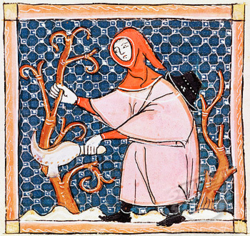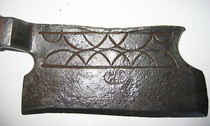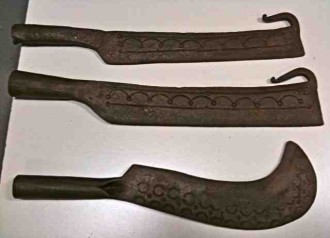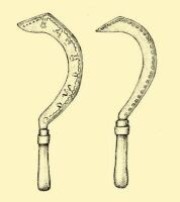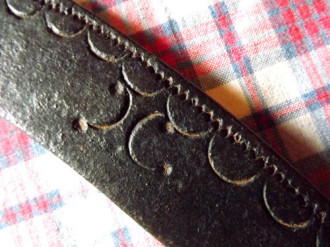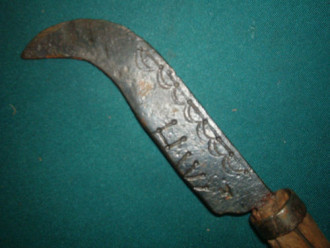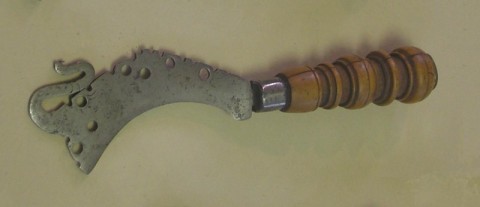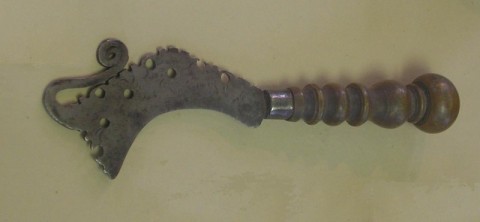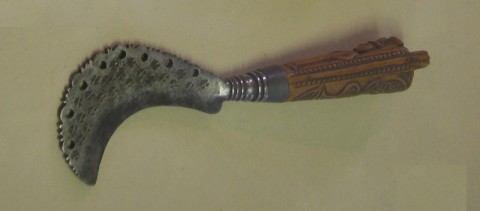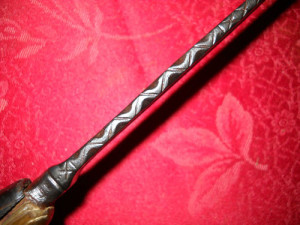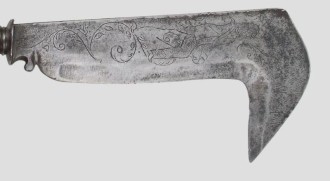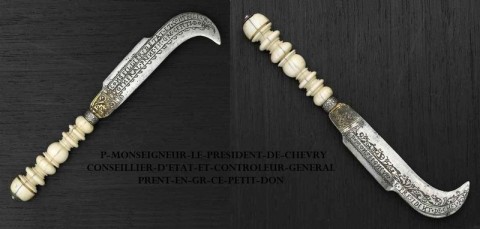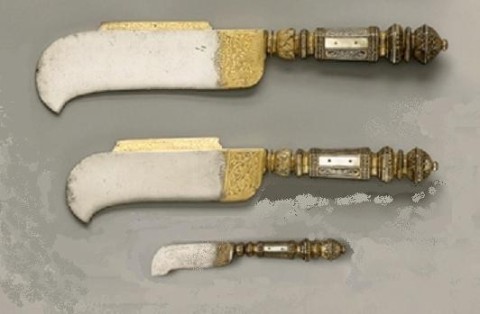Decorated billhooks
From the alpine regions of France and Italy and eastwards through Hungary into Romania, also north into parts of Germany, and south into the Balkans, billhooks with decorated blades are often found. For the most part they are simple incised patterns punched into the soft wrought iron back of the blade. The practice survived well into the 20th century in some areas.
This decorative serpette and the two below are in the collection of the Musée le Seq des Tournelles in Rouen in France - it is probably late 17th or early 18th century in origin. The handles are of boxwood.
Found an Italian antique arms auction site in 2010, this engraved blade is from an 18th century Italian 'roncoletta' or small roncola, probably made for a gentleman gardener. The handle (not shown) was from turned brass and was probably a later replacement (it would be cold and uncomfortable to use and incorrectly balanced). The original handle was probably turned wood, leather rings or possibly even ivory as on the French example below.
This engraved and partially guilded serpette in the collection of the Musée National de la Renaissance et Ecouen, north of Paris, was presented to the Charles Duret, the President of Chevry when he was appointed 'Controleur' of the Treasury of France at the beginning of the 17th century (during the reign of Henri IV).
This decorative German hippe from the 16th century is more decorative than functional. From the V&A collection in London, it is typical of the type of tool used by the aristocracy in their private gardens or on hunting trips in the forest. They are usually found as part of a set gardening tools, including loppers, pruning saw or a hammer, or sometimes with a matching knife and fork. Those below, made in Moulins in France and from a set of 7 tools, are in the Metropolitan Museum in New York. Engraved Faictamolyns (fecit à Moulins) & Alapalme they are also 16th century (Moulins was a renowned centre of cutlery making in the 16th century - 'at the sign of the palmtree' most likely refers to the name of the workshop).
